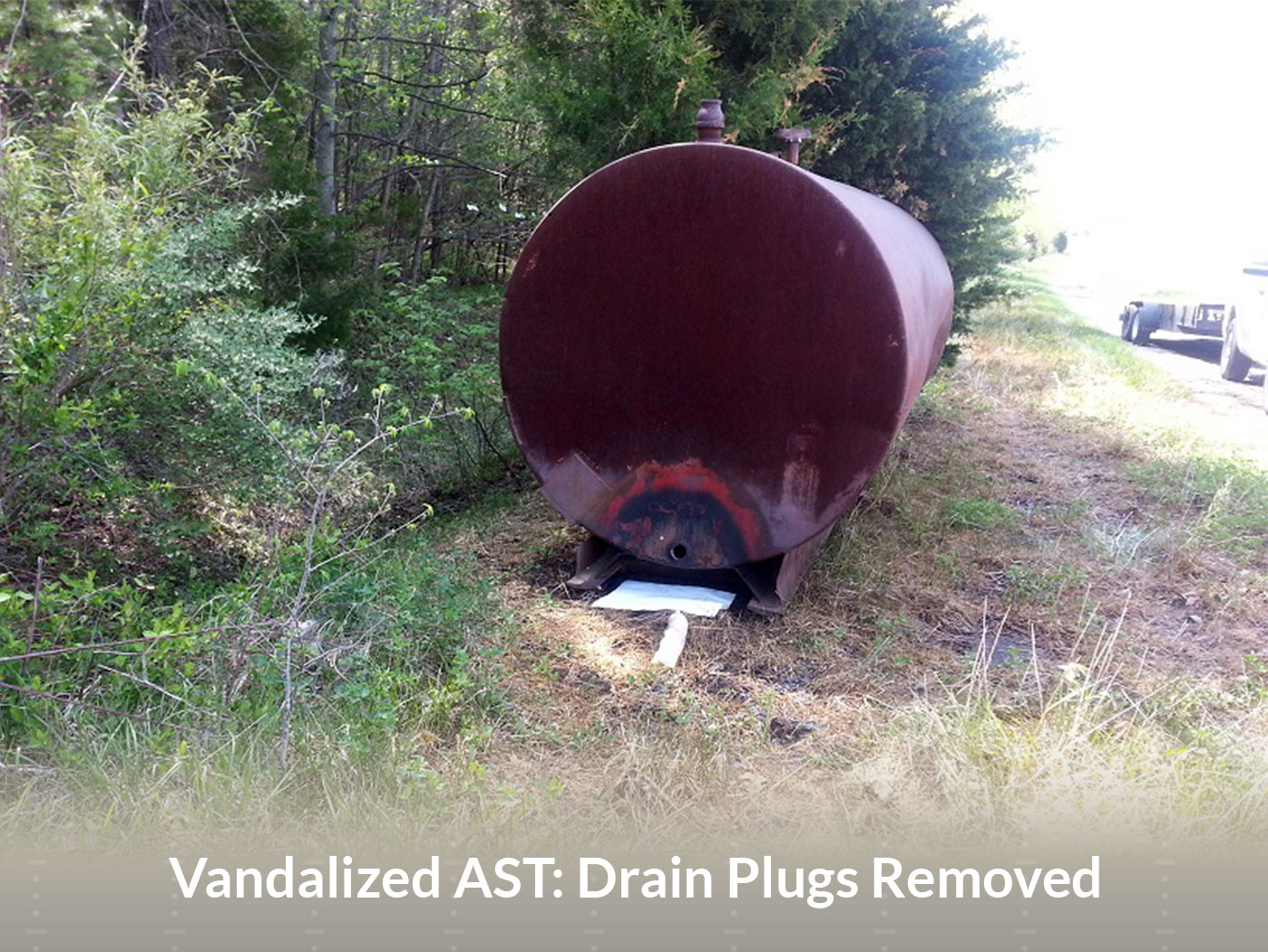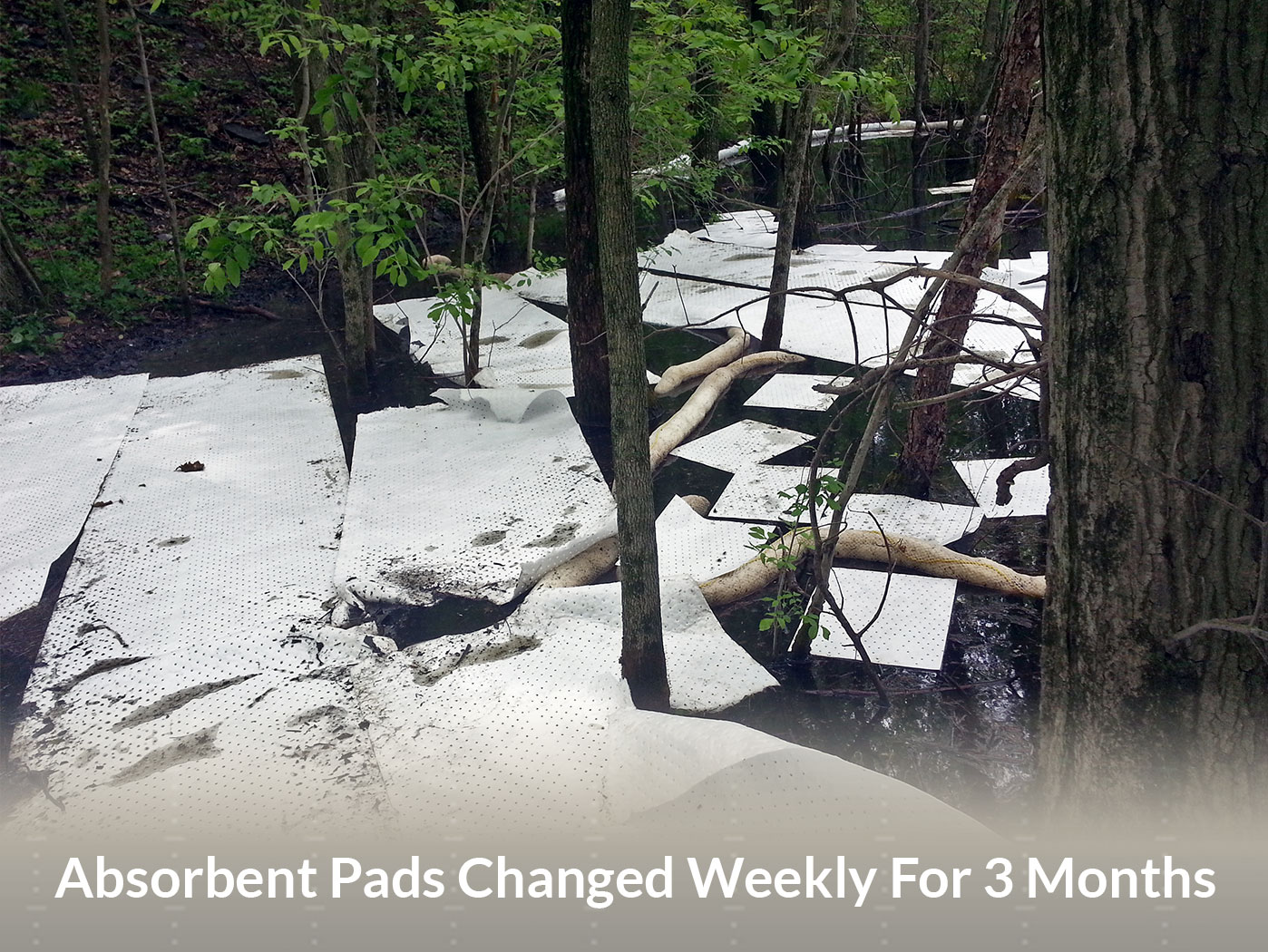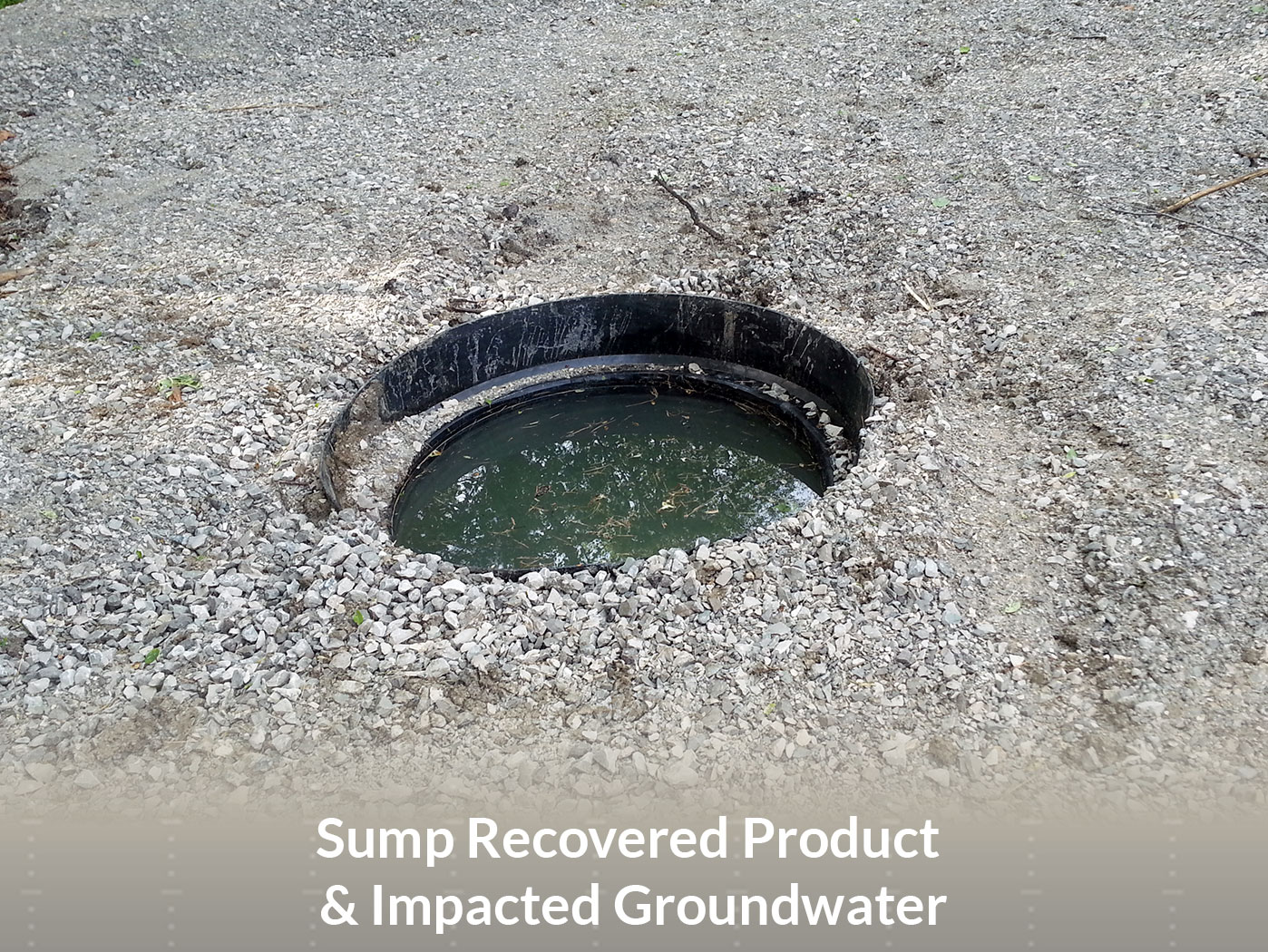Project Experience
Emergency Response: Closes Vandalized Site in 6 MonthsPROJECT FACTS:
CONTAMINANTS OF CONCERN – POLYNUCLEAR AROMATIC HYDROCARBONS (PAHS) AND PETROLEUM HYDROCARBON PRODUCTS (DIESEL FUEL & HEATING OIL)
KEY FACTS – EMERGENCY RESPONSE ACTION RESULTS IN CLOSURE BY THE STATE AGENCY OF AN ABOVE GROUND STORAGE TANK (AST) SPILL IN 6 MONTHS
SITE DESCRIPTION – REMEDIATION OF PETROLEUM AND (PAH) IMPACTED SOIL AND GROUNDWATER
SITE SITUATION:
Two 2,100 gallon above ground storage tanks (ASTs) suffered a release that traveled across three different properties. One of the properties consisted of a residential home, woodlands, a lake and a seasonal pond. By the time the state agency’s emergency response team reached the site, free phase hydrocarbon (FPH) products had already covered the surface of the seasonal pond. Soil and sediment were impacted on the adjoining properties.
ACUITY INSIGHT:
AcuityES was contacted by an insurance representative for one of the property owners. AcuityES determined the ASTs had likely been vandalized because the drain plugs had been removed from the tanks. The petroleum release had not only impacted the surrounding soil and groundwater, it reached the south end of a seasonal pond (located east of the ASTs), migrated into a drainage swale south of the spillway and flowed onto an adjacent county road. The Site geology provided another challenge during the project. AcuityES discovered FPH was migrating in coarse, crushed bedrock (interflow) and mining overburden placed atop intact bedrock. This provided a preferential pathway for FPH migration via interflow toward a pristine stream which discharged water from the lake.
SOLUTION:
AcuityES contracted and supervised two hand-selected companies to execute Site cleanup.
- Interflow was cut off with barrier trenches and an extraction sump, preventing FPH from further entering the stream and shallow groundwater.
- A total of approximately 2,100 tons of PAH-impacted soil were excavated and disposed of off-Site.
- Approximately 17,000 gallons of liquid wastewater were removed to capture FPH and dissolved hydrocarbons.
- Groundwater impacts were avoided by the quick installation of barrier trenches and excavation activities.
Seasonal Pond Cleanup
- Site cleanup activities included a vacuum skimming a thin layer of FPHs from the surface of the pond and spillway.
- Absorbent pads were replaced weekly for approximately 3 months. During the seasonal pond clean up, approximately 100 to 200 gallons of FPH products and approximately 17,000 gallons of water were collected subsequent to the skimming and vacuuming. The water was emptied temporarily into a mobile 20,000 gallon storage tank for appropriate disposal.
- A circulation pump and a compressor were used to aerate the pond for several days. This increased the dissolved oxygen (DO) content of the pond with values ranging from 2.3 to 4 milligrams per liter (mg/L). The increased DO content stimulated indigenous microbial populations which further reduced concentrations of petroleum hydrocarbons in sediment and surface water.
Drainage Swale Cleanup
- A series of trenches were dug to remove FPH that had migrated via the access road ditch and subsurface in the drainage swale via interflow toward the stream.
- Impacted soils were excavated from a drainage swale on one of the properties. To prevent migration of petroleum hydrocarbons into the ditch, a trench and berm constructed with crushed limestone, were placed at the south end of the swale.
- A 48-inch diameter sump was installed north of the crushed limestone trench. The sump was used to recover FPH.
ASTs Decommissioned The ASTs were cleaned by double washing and rinsing. After cleaning the ASTs, they were rendered useless by cutting a hole in the side of each AST, thus preventing viability for storage and eliminating possible future spills. The wash water was collected in a vacuum truck and properly disposed of at a licensed waste water treatment facility. Post excavation, confirmatory samples verified that residual petroleum hydrocarbons are below the applicable state agency screening levels.
GIVE US JUST 15 MINUTES
Let’s talk about how to close your Site faster.





